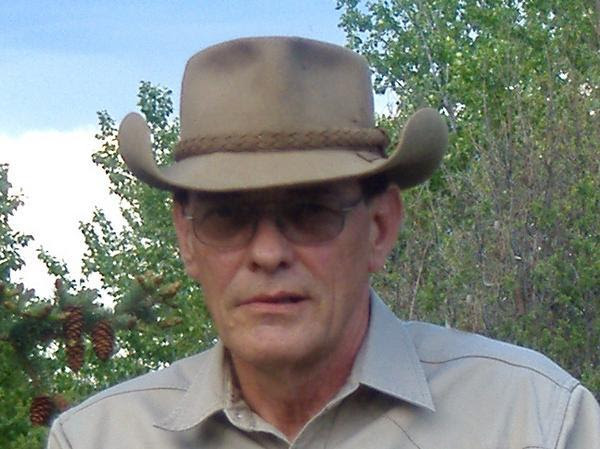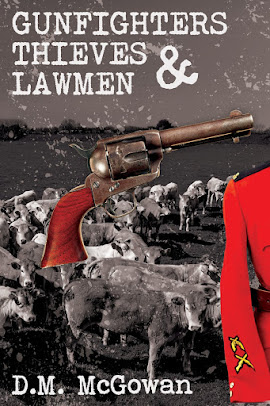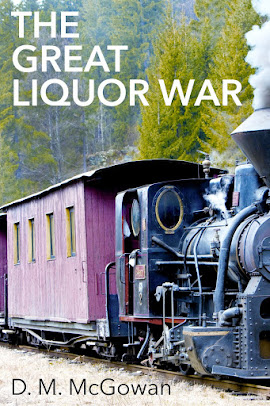“The Making of Jake McTavish” is the forth novel where bits
of my imagination have escaped out into view of the general public.
I don’t believe any of those escapees will hurt anyone and
hopefully they will be entertaining and even informative.
I know I’m tired of seeing how Western Canada ’s
police officers of the 19th century where all paragons of virtue
and/or the “geeks” or “nerds” of that age. I’m sure (and research supports my
idea) that they were men (in all cases that part is 100% true) with good and
bad qualities who were looking for a regular place to bunk and, in later years,
a small pension.
There have been a few writers who have tried to portray the
pioneers of Western Canada as people with “warts and
all”. Those that come to mind are Guy Vanderhaeghe and Bill Gallaher. Years ago
I read some mountain man tales that included some mention of travel through
those mountains that are now within Canada
but much of what I read and view today about Canada ’s
pioneer days carries the danger of inciting diabetes due to the excessive
sweetness.
The reason I was thinking of this was the research that I’m
doing for another novel I’m working on. I may have mentioned in an earlier post
that a few readers have contacted me through the connection on this blog and on
the street asking what might have become of the five men who became partners in
the novel “Partners”. With the intent of creating an answer to that question
I’ve started a story that begins the spring after the events of “Partners” come
to a close.
What I’m saying is that I really don’t have an answer to the
question but will by the time I finish writing the story. One thing I want to
happen is for at least four of the “Partners” to find mates. What I’ve written
so far includes the marriage of one of the partners and his temporary move to Victoria .
I also have lady friends for two more of the partners and was looking for more
information of females of the time and era.
I decided, while writing the first few chapters of what I
am, at this point, calling “Underbelly” that it would be good to include some
information about the real people who worked and lived in Barkerville back in
the late 1860s.
For instance these facts from a few sources I’ve found about
the first gold discoveries in BC.
The first indication of gold was through a collection made
by Hudson ’s Bay factors in the
Colony of British Columbia who had accepted gold in payment for goods. The HBC
did not encourage information on such trade to be made public since they
expected (and were proven correct) that such information would interfere with
their fur trade. However, after several trades the accumulated gold had to be
reported and banked.
In a letter written by the Chief Factor for HBC, James
Douglas on April 16,1856 he reported to the British Colonial Secretary that
“gold has been discovered on the Upper Columbia .”
On December 28,
1857 Chief Factor Douglas issued a proclamation instituting a
system of licenses for prospectors at a fee of 10 shillings or 5 US dollars.
On July 1, 1858
Factor Douglas, after 37 years with the HBC became an employee of the British
government and Governor of both the Colony of British Columbia and the Colony
of Vancouver Island. He exercised his management duties primarily from Fort
Victoria Fort Langley
Through out 1858 and ’59 both colonial capitals, Victoria
and Langley grew. Victoria from a
relatively stable population of around 600 to an estimate (but violently
fluctuation according to season) of five or six thousand to a winter low of
around 2000. Fort Langley Victoria
the town of Langley was not on the
site of the original trading post.
The big finds on Williams
Creek Fraser
River Quesnelle
River Harvey
and Cunningham Creeks (named after men who found gold on the creeks). In the
spring of 1861 there were 1200 men on Antler Creek. Also in the spring of 1861
was when Williams Creek
The day the partners discovered the gold each of the five
was successful in their efforts. Dutch Bill however retrieved the most with an
average of $1.25 per pan. It is because of his larger return that the creek is
named for him. Despite the actual discover in 1861 the five claims where not
registered until March 22, 1862 .
During that first winter there were only 90 men and 7 women
who stayed on the creek for the winter. By the time the first claims were
registered however there where thousands on the trails to the Cariboo Country
and to Williams Creek Williams
Creek Richfield
and Barkerville.
In 1862 Billy Barker (“English Bill”) after chasing the
elusive yellow metal for 16 years took on eight partners. On August 17, 1862 they found the lead
and took 124 ounces from their shaft in 10 hours.
Now, what I was originally looking for was some of the
actual people who developed Williams Creek Richfield , Cameronton
and Marysville. I’m particularly interested in are the women but they are very
hard to find since few recorded any information about them.
With the help of several writers and researchers, most
notably R.T. Wright and his book, “Barkerville and the Cariboo Goldfields” I’ve
found info on some of those women. I’ll get to that in my next posting.








No comments:
Post a Comment